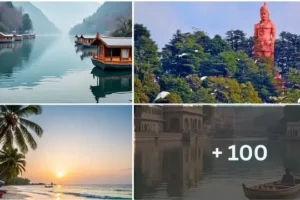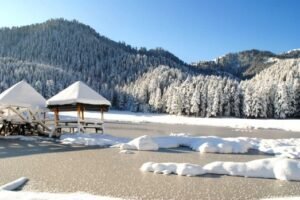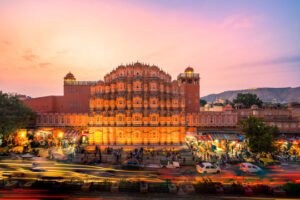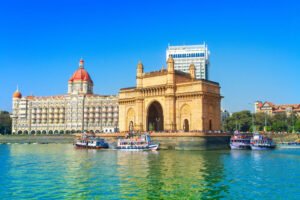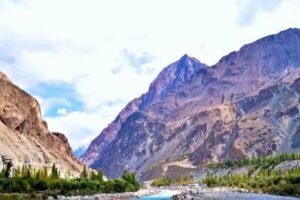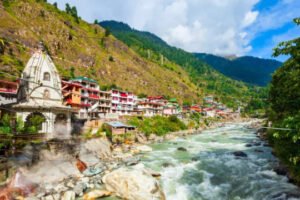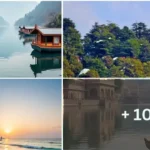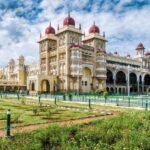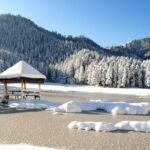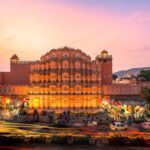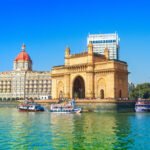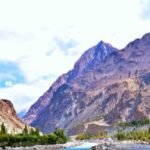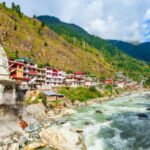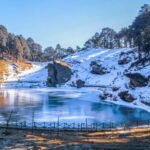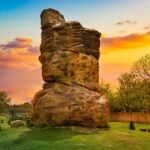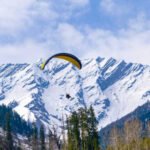Top 10 Tourist Places in India in Summer

Craving for an escape from the scorching summer heat? We’ve got you covered with top 10 tourist places in India in summer. While researching the web, chances are, you may find a list of hill stations in North India, ultimately making Himachal Pradesh and Uttarakhand a great place to seek respite. However, some of the popular summer destinations in India are also close to the coast, in Maharashtra, Kerala, and Tamil Nadu.
These states have popular summer destinations that may help create sweet travel memories as the summer season starts to roll.
India’s summer begins in April and lasts until June, and it is during this time that most of you will be planning summer vacations. From basking in the seclusion of the Himalayan destinations in the north to enjoying the fresh air oozing out of hill stations in the south, there are many reasons to travel to these summer destinations. So, in order to assist you in selecting the most popular summer destinations in India, we have written a short guide for you.
1) Spiti
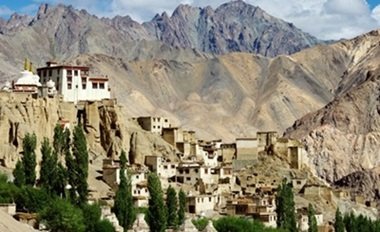
Spiti Valley, often called “Little Tibet,” is a high-altitude cold desert region located in the northeastern part of Himachal Pradesh, India. The name “Spiti” means “The middle land,” referring to its location between Tibet and India.
Places to Visit in Spiti Valley:
Spiti offers a unique blend of natural beauty, cultural richness, and adventure opportunities. Some popular places to visit include:
- Key Monastery (Kye Gompa): One of the largest and oldest monasteries in Spiti, perched on a hilltop offering panoramic views.
- Tabo Monastery: An over 1000-year-old monastery renowned for its ancient murals and stucco sculptures, often called the “Ajanta of the Himalayas.” It is an ASI protected monument and considered one of the holiest monasteries in the Indo-Tibetan region.
- Dhankar Monastery and Lake: A fort-monastery perched high above the confluence of the Spiti and Pin rivers, with a beautiful high-altitude lake a short trek away.
- Chandratal Lake: A stunning crescent-shaped lake situated at a high altitude, known for its crystal blue waters and breathtaking scenery.
- Pin Valley National Park: A cold desert biosphere reserve home to diverse flora and fauna, including the elusive snow leopard.
- Suraj Tal: The “Lake of the Sun God,” one of the highest lakes in India, and the source of the Bhaga River.
- Nako Village and Lake: A picturesque village known for its serene lake surrounded by willow and poplar trees and its ancient monastery.
- Kibber Village: One of the highest inhabited villages in the world, known for its unique architecture and the Kibber Wildlife Sanctuary.
- Gue Village: Famous for the naturally preserved mummy of a Buddhist monk.
- Tashigang: A quaint village holding the record for being the highest polling station in the world, offering lovely views.
- Triloknath Temple: A revered pilgrimage site for both Hindus and Buddhists.
- Kunzum Pass: A high mountain pass connecting Lahaul and Spiti valleys, offering breathtaking views.
Best Time to Visit:
The best time to visit Spiti Valley is generally from May to October when the weather is relatively mild, and the roads are usually open. During this period, temperatures range from 0 to 25 degrees Celsius. Winter (October to February) is extremely cold with limited accessibility due to heavy snowfall, making it suitable only for the most adventurous travelers.
2) Coorg
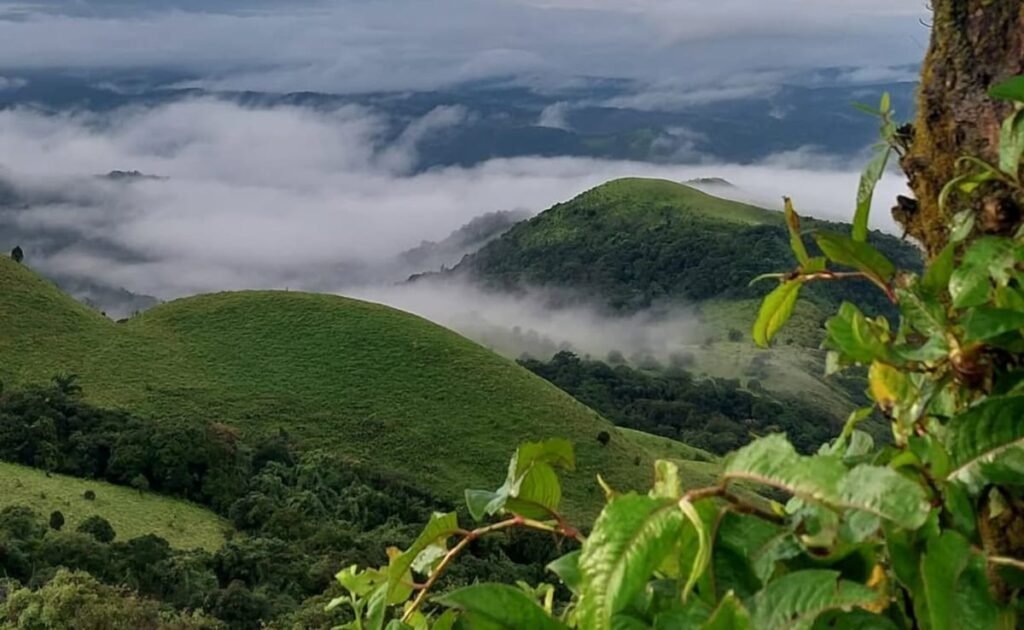
Coorg, officially known as Kodagu, is a rural district located in the southwest Indian state of Karnataka. Often dubbed the “Scotland of India,” it’s a popular hill station known for its stunning landscapes, sprawling coffee plantations, misty hills, and rich history and culture.
Here’s a brief overview of Coorg:
- Location: Situated in the Western Ghats of Karnataka.
- Nickname: “Scotland of India” due to its misty hills and scenic beauty.
- Key Features:
- Vast coffee and spice plantations (cardamom, pepper, oranges).
- Lush green hills and valleys.
- Dense forests (bamboo, sandalwood, rosewood).
- Cascading waterfalls and numerous streams.
- Rich Kodava culture with unique customs and traditions.
- Known for the hospitality of the Kodava people.
- Economy: Primarily based on agriculture, plantations (especially coffee), and forestry. Coorg is a major coffee-producing region in India.
- Best Time to Visit: Generally, October to March is considered the best time for pleasant weather and outdoor activities. April and May are also good. Monsoon (June to October) brings heavy rainfall, transforming the region into a lush paradise.
Some popular places to visit in Coorg include:
- Madikeri Fort: A historical fort with a museum and church.
- Abbey Falls: A scenic waterfall nestled amidst coffee and spice plantations.
- Raja’s Seat: A garden offering panoramic views of the hills, believed to be a favorite spot of Kodava kings.
- Golden Temple (Namdroling Monastery): A large and beautiful Tibetan Buddhist monastery in Bylakuppe.
- Talakaveri: The birthplace of the sacred Kaveri River.
- Bhagamandala: A religious site at the confluence of three rivers.
- Dubare Elephant Camp: A camp where you can observe and interact with elephants.
- Iruppu Falls: Another beautiful waterfall originating from the Brahmagiri Range.
- Mandalpatti View Point: Offers breathtaking views of the surrounding hills.
- Omkareshwara Temple: A 19th-century Hindu temple with a unique architectural style.
- Tadiandamol Peak: The highest peak in Coorg, popular for trekking.
3) Almora
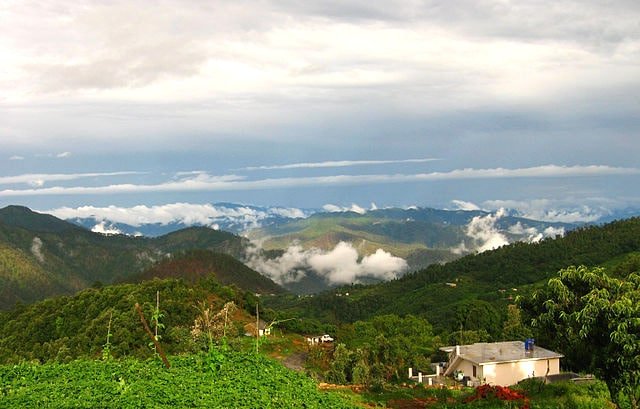
Almora is a municipal corporation and a cantonment town in the state of Uttarakhand, India. It is the administrative headquarters of 1 the Almora district. Here’s a breakdown of what Almora is known for:
Location and Geography:
- Located on a ridge at the southern edge of the Kumaon Hills of the Himalayas.
- Shaped like a horse saddle, with the eastern part called Talifat and the western part Selifat.
- Surrounded by thick forests of pine, deodar, and fir trees.
- The Kosi (Kaushiki) and Suyal (Salmale) rivers flow alongside the city.
- Offers panoramic views of the snow-capped Himalayas.
- Sits at an average elevation of 1,642 meters (5,387 feet) above sea level.
Culture and Significance:
- Considered the cultural heart of the Kumaon region of Uttarakhand.
- Known for its rich cultural heritage, unique handicrafts, and delicious Kumaoni cuisine.
- Has attracted many notable figures throughout history, including Swami Vivekananda, Rabindranath Tagore, and Mahatma Gandhi.
- The dance academy set up by dancer Udai Shankar in 1938 was located here.
Places to Visit:
- Chitai Golu Devta Temple: A famous temple dedicated to Golu Devata (an incarnation of Lord Shiva), known as the “Temple of a Million Bells.”
- Bright End Corner (Vivekananda Corner): A scenic spot offering breathtaking views of sunrise and sunset over the Himalayas.
- Nanda Devi Temple: A 1000-year-old temple dedicated to Goddess Nanda Devi.
- Govind Vallabh Pant Museum: Exhibits artifacts and antique collections related to the Katyuri and Chand dynasties and Kumaoni culture.
- Deer Park: A park with lush greenery where you can spot deer and other wildlife.
- Binsar Mahadev Temple: An ancient temple surrounded by thick forests.
- Jageshwar Temple: A complex of over 100 ancient stone temples dedicated to Lord Shiva.
- Katarmal Sun Temple: A 9th-century sun temple, the second most important in India after the Konark Sun Temple.
- Kasar Devi Temple: A 2nd-century temple known for its spiritual energy and visited by figures like Swami Vivekananda.
- Lal Bazaar: A shopping center for local crafts, woolen garments, and traditional items.
4) Dalhousie
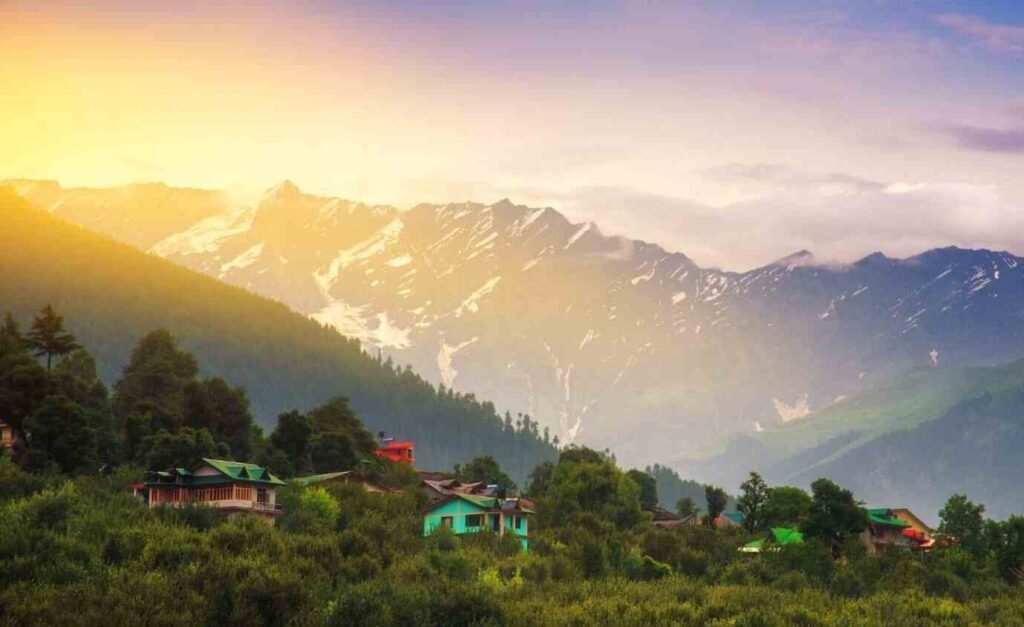
Dalhousie is a charming hill station located in the Chamba district of Himachal Pradesh, India. Here’s a breakdown of what it is and some key information:
Key Highlights and Places to Visit:
- Khajjiar: Often called “Mini Switzerland,” this picturesque meadow with a lake surrounded by deodar and pine trees is a major attraction. Activities include zorbing, paragliding, and horse riding.
- Dainkund Peak: The highest point in Dalhousie, offering panoramic views of the valleys. It’s a relatively easy trek and home to the Pholani Devi Temple.
- Kalatop Wildlife Sanctuary: A beautiful reserve with diverse flora and fauna, including the Himalayan black bear. Ideal for nature walks and bird watching.
- Panchpula: A scenic spot where five streams meet, known for its waterfalls and a monument dedicated to freedom fighter Sardar Ajit Singh.
- St. John’s Church: The oldest church in Dalhousie, built in 1863, showcasing British architecture with stained glass windows.
- Subhash Baoli: A tranquil spot with a natural spring named after freedom fighter Subhash Chandra Bose, who is believed to have spent time here.
- Chamera Lake: An artificial lake formed by the Chamera Dam on the Ravi River, popular for boating and picnics.
- Ganji Pahari: Also known as “Bald Hill” due to the absence of vegetation on top, offering stunning views.
- St. Patrick’s Church: The largest church in Dalhousie, built in 1909.
- Rock Garden: A unique garden featuring rocks, plants, and water bodies.
- Bhuri Singh Museum (in Chamba, near Dalhousie): Showcases the region’s history and art, including Pahari paintings.
- The Mall Road: The main market area for shopping, especially for woollen Himachali shawls, Chamba rumals, and Tibetan handicrafts.
Best Time to Visit:
- March to May (Spring): Pleasant weather with clear skies, ideal for sightseeing and outdoor activities.
- June to September (Monsoon): Can have heavy rainfall, but the hills are lush green. Mists can create a romantic setting.
- October to February (Winter): Cold, with chances of snowfall, offering a different charm.
How to Reach:
- By Air: The nearest domestic airport is Gaggal Airport (Kangra), about 110 km away.
- By Rail: The nearest major railway station is Pathankot, around 80 km away.
- By Road: Dalhousie is well-connected by road to major cities like Pathankot, Amritsar, Delhi, and Shimla. Buses and taxis are readily available.
5) Shimla
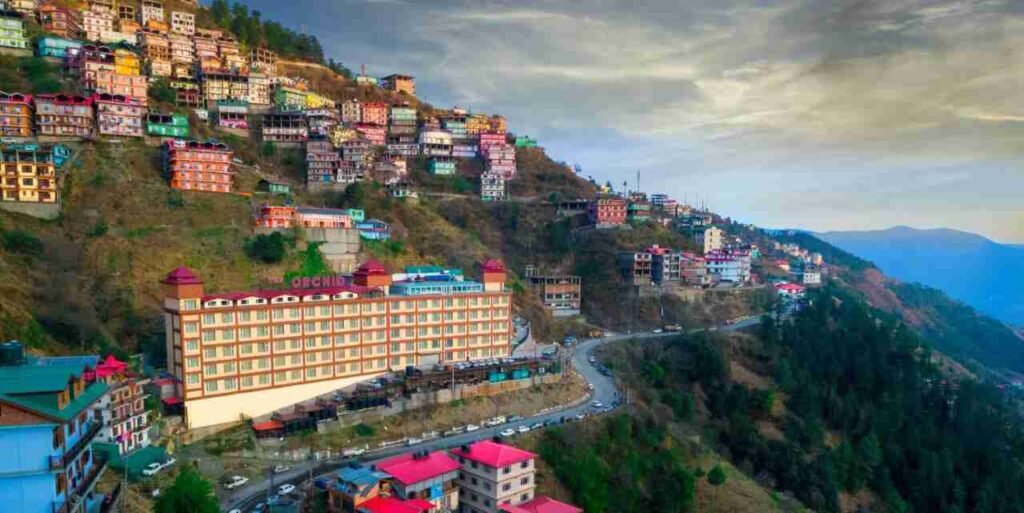
Shimla, also known as Simla until 1972, is the capital and the largest city of the northern Indian state of Himachal Pradesh. Nestled in the Himalayan foothills at an average altitude of 2,206 meters (7,238 ft), it’s a popular hill station renowned for its scenic beauty and colonial-era architecture.
Key Attractions:
- The Mall Road: The main commercial and social hub of Shimla, lined with shops, restaurants, and cafes. Vehicles (except emergency ones) are not allowed here, making it ideal for strolling. Key points on Mall Road include:
- Scandal Point: A famous meeting place with a statue of Lala Lajpat Rai.
- Gaiety Theatre: A historic Victorian-style theatre.
- Kali Bari Temple: A temple dedicated to Goddess Kali.
- Town Hall: A prominent colonial-era building housing the Municipal Corporation.
- The Ridge: A large open space in the heart of town offering panoramic mountain views. It’s a center for cultural activities.
- Jakhu Temple: An ancient temple dedicated to Lord Hanuman, located on Jakhu Hill, the highest peak in Shimla. It features a very tall statue of Hanuman.
- Christ Church: A prominent neo-Gothic church with colonial charm.
- Viceregal Lodge (Rashtrapati Niwas): A grand colonial-era building with impressive architecture and botanical gardens.
- Himachal State Museum & Library: Showcases the region’s history and culture with artifacts, manuscripts, and paintings.
- Annandale: A famous playground with scenic surroundings and an Army Heritage Museum.
- Kalka-Shimla Railway: A historic narrow-gauge railway offering scenic journeys through the hills.
Weather:
- Current Weather (Thursday, April 10, 2025, 9:40 PM IST): The weather in Shimla is currently around 14°C and mostly cloudy. It feels like 14°C due to windchill. The wind is blowing from the east at about 5 km/h.
- Tonight: The forecast is for a high of 13°C and a low of 9°C, with cloudy skies and no rain expected.
- Tomorrow (Friday, April 11, 2025): There is a moderate chance of light rain, particularly from around 10:00 AM to 1:00 PM. The high will be around 20°C and the low around 9°C.
- Best Time to Visit:
- March to June: Pleasant weather, ideal for sightseeing and outdoor activities.
- October to February: Chilly weather with chances of snowfall, popular for skiing and ice skating.
- July to September: Monsoon season with heavy rainfall and occasional landslides (off-season with fewer crowds and potential discounts).
6) Darjeeling

Darjeeling, often called the “Queen of the Hills,” is a captivating town nestled in the northernmost region of West Bengal, India, in the Eastern Himalayas. With an average elevation of 2,045 meters (6,709 ft), it boasts a cool and pleasant climate, making it a popular destination year-round.
History:
- The name “Darjeeling” originates from the Tibetan words “Dorje” (thunderbolt) and “Ling” (place or land), literally meaning “Land of the Thunderbolt.”
- Historically, the area was part of Sikkim and, for a brief period, Nepal.
- In 1835, the British East India Company acquired Darjeeling from the Chogyal of Sikkim and developed it as a sanatorium and a strategic military outpost.
- The suitability of the land for tea cultivation was discovered, leading to the establishment of numerous tea estates that still produce the world-renowned Darjeeling tea.
- The Darjeeling Himalayan Railway, or “Toy Train,” was completed in 1881 and is now a UNESCO World Heritage Site, offering a charming journey through picturesque mountain scenery.
- After India’s independence in 1947, Darjeeling merged with West Bengal. It also became home to many Tibetan refugees following the Chinese annexation of Tibet in 1959.
Tourism:
- Scenic Beauty: Panoramic views of the snow-capped Kanchenjunga, the world’s third-highest peak, are a major draw. Tiger Hill is famous for its breathtaking sunrise views over these majestic mountains.
- Tea Gardens: Explore the lush green slopes of the numerous tea estates, learn about tea production, and indulge in tea tasting sessions. Happy Valley Tea Estate is one of the oldest and most famous.
- Darjeeling Himalayan Railway (Toy Train): Experience a nostalgic ride on this narrow-gauge railway, traversing loops and zigzags through stunning landscapes.
- Monasteries: Visit ancient Buddhist monasteries like Ghoom Monastery, the oldest in Darjeeling, and Bhutia Busty Monastery to experience the region’s rich cultural heritage.
- Peace Pagoda: Find tranquility at the Japanese Peace Pagoda, offering serene views of the town and mountains.
- Himalayan Mountaineering Institute & Padmaja Naidu Himalayan Zoological Park: Learn about mountaineering history and see rare high-altitude animals like snow leopards and red pandas.
- Batasia Loop: Enjoy 360-degree views of Darjeeling and the surrounding mountains at this unique railway loop, which also features a war memorial.
- Chowrasta (The Mall): Take leisurely strolls, shop for local handicrafts and souvenirs, and soak in the colonial charm of this central gathering place.
- Adventure Activities: Trekking in the surrounding hills, including the popular Sandakphu trek, offers stunning Himalayan vistas. The Darjeeling-Rangeet Valley Passenger Ropeway provides thrilling cable car rides.
7) Wayanad

Wayanad is a picturesque rural district in the northeast of Kerala, India, nestled in the Western Ghats. Its name is derived from “Vayal Nadu,” meaning “the land of paddy fields.” This region is a captivating blend of history, culture, and stunning natural beauty, making it a popular destination.
Key Highlights of Wayanad:
- Natural Beauty: Wayanad boasts lush forests, mist-covered mountains, rolling hills, and serene lakes. It’s a haven for nature lovers with numerous waterfalls, viewpoints, and trekking trails.
- Biodiversity Hotspot: As part of the Nilgiri Biosphere Reserve, Wayanad is rich in flora and fauna. The Wayanad Wildlife Sanctuary, encompassing the Muthanga and Tholpetty ranges, is home to diverse wildlife, including elephants, tigers, leopards, deer, and various bird species.
- Historical Significance: The region has historical importance, with ancient petroglyphs found in the Edakkal Caves dating back to the Neolithic age. Wayanad also played a role in India’s freedom struggle.
- Spice Plantations: The aroma of spices fills the air in Wayanad, known for its extensive spice plantations, including tea, coffee, rubber, and various spices.
- Indigenous Culture: Wayanad is home to several indigenous tribal communities, adding to its unique cultural tapestry.
Popular Tourist Attractions:
- Edakkal Caves: Explore these natural prehistoric caves with ancient rock carvings.
- Chembra Peak: Trek to the highest peak in Wayanad and witness a heart-shaped lake.
- Banasura Sagar Dam: Visit India’s largest earthen dam and enjoy boating.
- Soochipara Falls (Sentinel Rock Waterfalls): A stunning three-tiered waterfall surrounded by forests.
- Meenmutty Falls: The second largest waterfall in Kerala, accessible through a jungle trek.
- Kuruva Island (Kuruva Dweep): An uninhabited island with dense forests.
- Pookode Lake: A serene freshwater lake with exotic flora.
- Thirunelli Temple: An ancient and picturesque temple dedicated to Lord Vishnu.
- Wayanad Wildlife Sanctuary (Muthanga and Tholpetty): Explore the rich biodiversity through jeep safaris.
- Phantom Rock: A unique rock formation resembling a skull.
- Chain Tree: A Ficus tree with a historical legend attached.
Best Time to Visit:
The ideal time to visit Wayanad is generally from October to May, with the peak season being from November to February when the weather is pleasant.
8) Gangtok
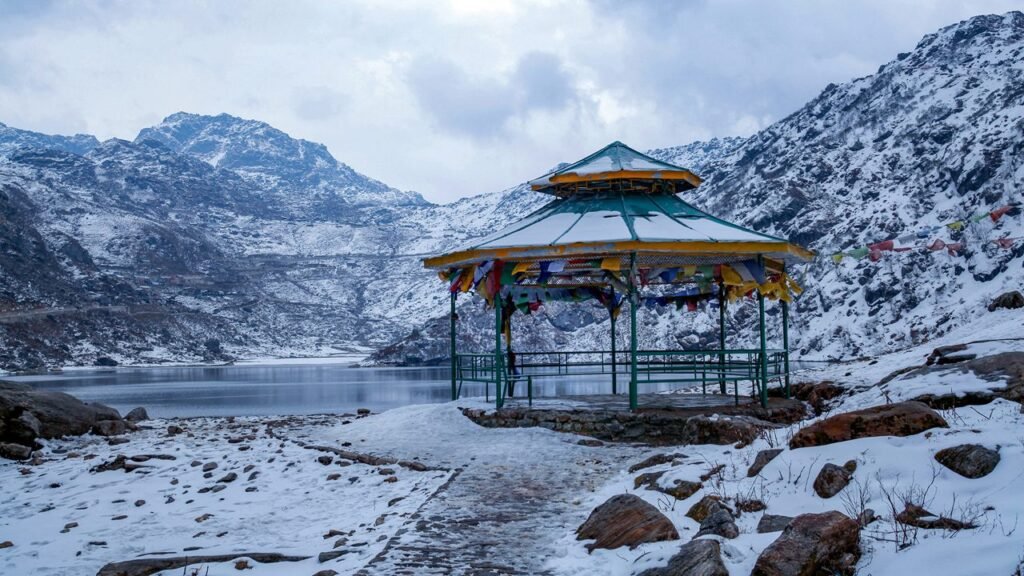
Gangtok is the capital and the largest town in the Indian state of Sikkim. Situated in the eastern Himalayan range at an elevation of 1,650 meters (5,410 ft), it is the center of Sikkim’s tourism industry. The city is known for its scenic beauty, pleasant weather, and numerous monasteries and Buddhist pilgrimage sites.
Key Attractions:
- Tsomgo Lake (Changu Lake): A high-altitude glacial lake surrounded by snow-capped mountains. It’s considered sacred and has a small temple dedicated to Lord Shiva.
- Nathu La Pass: A mountain pass on the Indo-China border, offering scenic views. Only Indian nationals with permits are allowed.
- Rumtek Monastery: One of the largest and most important monasteries in Sikkim, showcasing Tibetan Buddhist art and architecture.
- Do-Drul Chorten: A revered stupa built in 1945, housing important religious artifacts. It is surrounded by 108 prayer wheels.
- Enchey Monastery: A 200-year-old monastery with a serene ambiance.
- Namgyal Institute of Tibetology: A renowned research institute dedicated to Tibetan language, culture, and Buddhism. It has a museum with a rich collection of artifacts.
- Seven Sisters Waterfall: A picturesque waterfall where you can see four of the seven cascades.
- Khangchendzonga National Park: A UNESCO World Heritage site known for its biodiversity and stunning Himalayan landscapes.
- MG Marg: The main street in Gangtok, a pedestrian-only zone that is clean and lively, with shops and restaurants.
- Ganesh Tok: A temple offering panoramic views of Gangtok town and Mount Kanchenjunga on clear days.
- Tashi Viewpoint: Another spot offering excellent views of Kanchenjunga and the surrounding valleys, especially at sunrise and sunset.
- Hanuman Tok: A temple dedicated to Lord Hanuman, with religious significance and good views.
- Ban Jhakri Falls: A waterfall with an energy park showcasing Sikkimese folklore and tribal culture.
Activities:
- Trekking: Gangtok is a base for several popular treks in the Himalayan region, such as the Dzongri Trek and Varsey/Barsey Trek.
- Paragliding and Hang Gliding: Opportunities for adventure sports are available near Gangtok.
- Shopping: You can find Sikkimese handicrafts, traditional clothing, woolens, carpets, tea, and local wines in the markets like MG Marg, Lal Bazar, and Tibet Road.
Best Time to Visit:
- March to June: Pleasant weather, ideal for sightseeing.
- October to February: Clear skies and good views, although it can be cold.
Getting to Gangtok:
- By Air: The nearest airport is Pakyong Airport (PYG), about 30 km from Gangtok. However, it has limited connectivity. TheBagdogra Airport (IXB) in West Bengal is the major airport, about 125 km away, from where you can hire a taxi or take a shared vehicle to Gangtok (around 4-5 hours).
- By Train: The nearest railway station is New Jalpaiguri (NJP) in Siliguri, West Bengal, about 148 km from Gangtok. Regular trains connect NJP to major cities in India. From NJP, you can hire a taxi or take a shared vehicle to Gangtok.
- By Road: Gangtok is well-connected by road to other parts of Sikkim and nearby states like West Bengal.
9) Manali

Manali, nestled in the Kullu Valley of Himachal Pradesh, India, is a popular high-altitude resort town renowned for its stunning Himalayan landscapes, adventure activities, and cultural richness. Situated on the banks of the Beas River, it serves as a gateway to the Solang and Parvati Valleys and the majestic Rohtang Pass.
Key Highlights of Manali as a Tourist Place:
- Scenic Beauty: Manali boasts breathtaking views of snow-capped mountains, lush green valleys, dense forests of deodar and pine, and pristine rivers. The landscape transforms beautifully with the seasons, offering different experiences throughout the year.
- Adventure Hub: It’s a haven for adventure enthusiasts. Popular activities include:
- Skiing and Snowboarding: Solang Valley and Rohtang Pass are prime locations for winter sports.
- Paragliding and Zorbing: Enjoy thrilling aerial views and downhill rolling in Solang Valley.
- Trekking and Camping: Numerous trails cater to various fitness levels, with popular routes including Hampta Pass and Bhrigu Lake.
- River Rafting: The Beas River offers exciting white-water rafting opportunities.
- Mountain Biking and Mountaineering: The rugged terrain provides challenges for experienced adventurers.
Charming Towns and Villages:
- Old Manali: A quaint, laid-back area with a bohemian vibe, known for its cafes, guesthouses, and vibrant culture.
- Vashisht: A small village near Manali famous for its temple and hot springs.
- Naggar: A former capital of Kullu, featuring the Naggar Castle and Roerich Art Gallery.
- Solang Valley: Besides adventure sports, it offers picturesque landscapes and picnic spots.
- Sethan Valley: A serene and less explored village offering tranquility and beautiful views.
Best Time to Visit:
The ideal time to visit Manali depends on your preferences:
- March to June: Pleasant weather, ideal for sightseeing and outdoor activities.
- July to August: Monsoon season, with a risk of landslides.
- October to February: Cold weather, with snowfall, perfect for winter sports and enjoying the snowy landscapes.
10) Yercaud

Yercaud is a charming hill station nestled in the Shevaroy Hills of Tamil Nadu, India. Situated at an altitude of about 1,515 meters (4,970 feet), it’s known for its pleasant climate, lush greenery, and scenic beauty, earning it the nickname “Jewel of the South.”
Key Highlights:
- Yercaud Lake (Emerald Lake): A natural lake in the heart of the town, perfect for boating and surrounded by gardens.
- Lady’s Seat: A viewpoint offering panoramic views of the plains and a stunning sunset.
- Kiliyur Falls: A picturesque waterfall cascading from a height of about 300 feet. It’s best visited after the monsoon.
- Shevaroy Temple: Located on the highest point of the Shevaroy Hills, dedicated to Lord Shevaroyan. It offers great views.
- Botanical Garden: Home to a wide variety of plant species, including an Orchidarium with a rich collection of orchids.
- Anna Park: A well-maintained park near the lake with a Japanese garden and a flower show in May.
- Pagoda Point: A viewpoint with four piles of stones arranged like a pyramid, offering views of Attur and Ayothiapattinam. A Rama Temple stands between the pagodas.
- Bear’s Cave: A natural cave believed to have been a habitat for bears.
- Tipperary Viewpoint: Located at the southern end of Yercaud, offering views and the Elephant Tooth Rocks.
- 32-km Loop Road: A scenic route passing through coffee plantations, spice gardens, and villages.
- Silk Farm and Rose Garden: An interesting place to learn about silk production and admire a variety of roses.
Best Time to Visit:
The best time to visit Yercaud is generally from October to June, with the peak season being from November to February when the weather is cool and pleasant.
Yercaud offers a tranquil escape with its natural beauty and is a popular destination for families, nature lovers, and those seeking a peaceful retreat.
To reach Yercaud in brief:
- By Air: Salem Airport is the nearest airport (approx. 38 km). From there, take a taxi or bus.
- By Train: Salem Junction is the closest major railway station (approx. 35 km). Hire a taxi or take a bus from the station.
- By Road: Yercaud is well-connected by road. You can drive or take a direct bus from major cities like Chennai, Bangalore, and Coimbatore. The ghat road has 20 hairpin bends.
Which is the coolest place in India during summer?
During summer, Ladakh (including Leh and Drass), Spiti Valley, and the high-altitude regions of the Himalayas, such as Sikkim, Arunachal Pradesh, and parts of Himachal Pradesh, are known for being the coolest places in India. These areas offer a respite from the scorching heat of the plains due to their altitude and climate.
Which tour is best in summer?
Manali, Himachal Pradesh. Manali is a haven for nature lovers and adventurers alike. …
Ladakh, Jammu and Kashmir. …
Kashmir (Srinagar, Gulmarg, and Pahalgam) …
Rishikesh, Uttarakhand. …
Andaman & Nicobar Islands.
Which city is cool in summer in India?
Several India cities offer cooler temperatures during the summer months. Popular choices include hill stations like, Coorg, Ooty and Munnar in the south, as well as destinations in the Himalayas like Ladakh, Shimla and Darjeeling.
What is a good place to go in summer?
Amalfi Coast.
Cyprus.
Glacier National Park.
Bali.
Bermuda.
Paris.
Rio de Janeiro.
The Azores.
How can I enjoy summer?
Have a Picnic in the Park. One of my favorite activities in summer is simply going outside and having a picnic. …
Get Creative in the Kitchen. …
Enjoy Free Activities. …
Go on a Summer Purge. …
Write Letters of Gratitude. …
Explore Your Neighborhood. …
Have a Themed Event.
Which state is best to visit in summer?
Himachal and Uttrakhand
How can I spend my summer vacation?
Exploring local attractions and pursuing local hobbies, spending time with family and friends.
